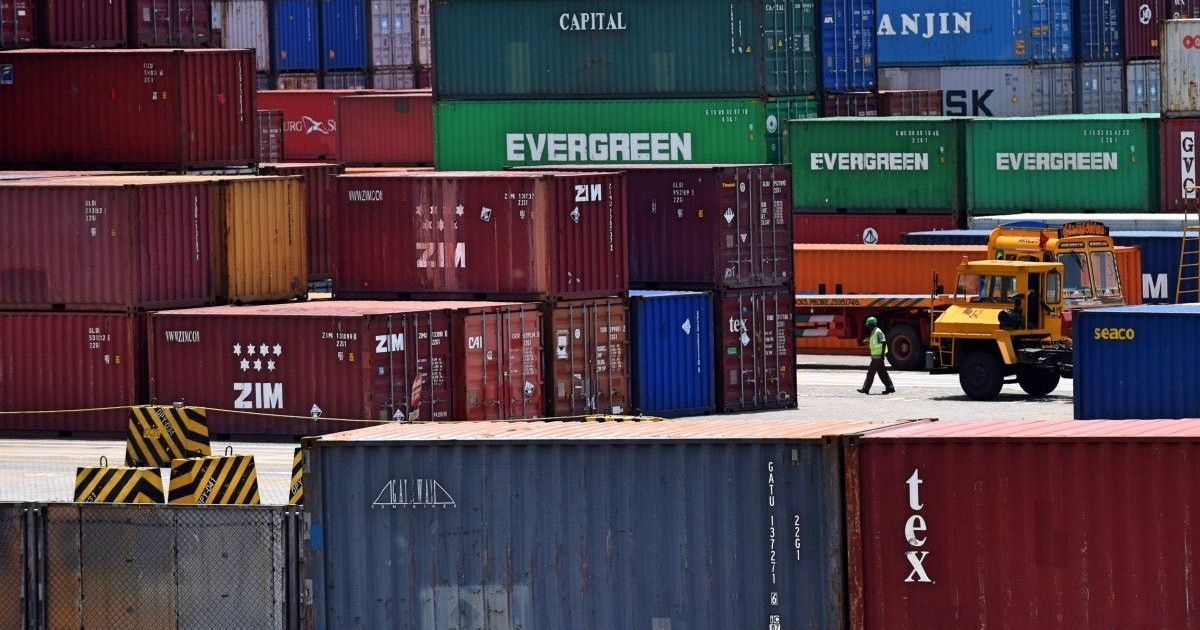India’s goods exports crossed a record high $400 billion mark in 2021-’22, nine days ahead of schedule, said the Union Ministry of Commerce & Industry on March 23. Prime Minister Narendra Modi also tweeted in praise of the achievement.
India set an ambitious target of $400 Billion of goods exports & achieves this target for the first time ever. I congratulate our farmers, weavers, MSMEs, manufacturers, exporters for this success.
— Narendra Modi (@narendramodi) March 23, 2022
This is a key milestone in our Aatmanirbhar Bharat journey. #LocalGoesGlobal pic.twitter.com/zZIQgJuNeQ
“India set an ambitious target of $400 billion of goods exports and achieved this target for the first time ever. I congratulate our farmers, weavers, Ministry of Micro, Small and Medium Enterprises, manufacturers, exporters for this success. This is a key milestone in our Aatmanirbhar Bharat journey. #LocalGoesGlobal,” tweeted the PM.
The exports, which touched $374.05 billion by February, had registered a 45.8% jump in April 2021-February 2022 compared to the same period last year and it was 28.16% higher than the same period in the fiscal year 2019-’20. But the imports, however, had cost India $550.12 billion, marking a 59.21% increase over the same period in the fiscal year 2020-’21.
Trade deficit widens
This widened the trade deficit to $176.07 billion as India had spent more on imports during April 2021-February 2022. The trade deficit is basically the difference between the amount spent on imports and the amount earned from exports. The current trade deficit of $176.07 billion is 16.32% higher than the trade deficit during the same period in the fiscal year 2019-’20 and a 97.86% increase over the fiscal year 2020-’21.
In the month of February 2022, India exported merchandise goods worth $33.81 billion, which was $27.63 billion in February 2021, and $27.74 billion in February 2020.
In February 2022, India’s merchandise imports were $55.01 billion, the third-highest in fiscal year 2021-’22 after December 2021 ($59.27 billion), and September 2021 ($55.8 billion).
The trade deficit for February 2022 was $21.19 billion which has grown by 61.59% over February 2021, and by 108.56% over February 2020.

India’s imports
Non-petroleum products accounted for 74.18% of India’s imports: India imported $550.12 billion worth of products during April-February and, of this, $408.63 billion or 74.18% were non-petroleum, oil and lubricant products.
When petroleum and non-petroleum commodity groups are considered together, the top 10 commodity groups imported during the 11 months were Petroleum, Crude & products at $141.486 billion, electronic goods at $64.745 billion, gold at $45.033 billion and machinery, electrical and non-electrical $36.392 billion, pearls, precious and semi-precious stones at $27.585 billion organic and inorganic chemicals at $27.498 billion, coal, coke and briquettes at $27.120 billion, artificial resins and plastic materials $18.238 billion, transport equipment at $18.211 billion and vegetable oil at $17.24 billion.

These top 10 commodity groups formed 77% of the cumulative imports in April 2021-February 2022.
Widened trade deficit
The share of the top 10 commodity groups has increased by 62.68% than the same period last year. The import of petroleum, crude & products during the last 11 months showed a growth of 95.39% over the same period in 2020-’21.
A trade deficit is not necessarily a bad thing, said Mahesh Vyas, CEO, Centre for Monitoring Indian Economy. “It just means that we are importing a lot more than we are exporting,” said Vyas. “It means that there is great demand for goods and other things and there’s nothing wrong with that.”
But, trade deficit could have a negative effect on the valuation of the rupee. “An important channel through which trade deficits affect the rest of the economy is the exchange rate,” said Sabyasachi Kar, RBI Chair Professor at the Institute of Economic Growth. “Basically, if we are importing more, we need more dollars to pay for it. So, there is more demand for dollars, and as a result, the price of a dollar goes up. Which means the rupee becomes weaker. That is, we pay more rupees per dollar.”
Furthermore, the Centre for Monitoring Indian Economy had, in December 2021, published that the Indian Rupee had been under pressure. “Foreign portfolio investors have recorded net outflows in November and there is the threat of interest rates rising in the United States,” read the report. “In light of these developments, if the merchandise trade deficit continues to widen further in the coming months it can exert pressure on the country’s exchange rate.”
The Indian rupee hit an all-time low of Rs 76.96 against the US dollar on March 7.
The reason India cannot allow trade deficits to go entirely out of hand is that most of our oil is imported, and a weaker rupee would make these oil imports costlier. This would have a strong effect on inflation, said Kar. “With higher inflation, growth and employment may be hit as well,” he added.
But on a net basis, the country’s trade deficit reduces quite substantially due to non-merchandise trade, which is a positive sign, explained Vyas. “A large part of the merchandise trade deficit amount is offset by the non-merchandise and services trade, where we have a surplus,” he said. “So, on a net basis, our deficit reduces quite substantially. Then, we have capital flows.”
“So we are still left with usually around between 1%-2% GDP deficit which most call the current account deficit,” he concluded. “That deficit is fulfilled by our [country’s] capital receipts. On a net basis, we have a lot of reserves with us and the reserves keep growing so there is no real danger of the rupee depreciating because of the trade deficit.”
This article first appeared on FactChecker.in, a publication of the data-driven and public-interest journalism non-profit IndiaSpend.










